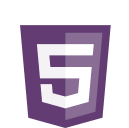We’ve already talked a bit about paid traffic and Pay Per Click (PPC). So today we’re going to take a step-by-step approach to creating effective PPC campaigns.
In this article, you’ll learn how to structure your campaign, analyze the results and optimize them. Read on!
What are the main PPC platforms?
There are several different platforms you can explore. Depending on your audience and the objective of your campaign, you can choose one or more. However, be very careful because each one can return different data!
Here are some of the most used:
Google Ads
Formerly Google Adwords, Google Ads is by far the best known and most widely used PPC platform today, accounting for almost 95% of users in Brazil.
It allows for an interesting variety of ad displays, such as in search results, on the display network and even within some websites.
As the largest search engine today, investing in Google Ads is important for those who want to reach a large volume of people. It also allows a high level of segmentation based on criteria such as location, behavior and latest searches, for example.
Due to its popularity, it has a high level of diversification when it comes to advertising tools, which helps in the creation and monitoring of campaigns.
Bing Ads
Bing is Microsoft’s search engine. Although it is less used than Google, Bing Ads, also known as Microsoft Advertising, can be a great option for more specific audiences.
When it comes to handling and creating campaigns, Bing Ads has a very similar interface to Google. By having a lower volume of traffic and less competition, campaigns can be more accurate and the Return on Investment (ROI) more interesting.
Meta Ads
Formerly known as Facebook Ads, today Meta Ads also covers Instagram and Messenger, as well as Facebook and other apps within the Meta universe.
Due to its popularity, Meta Ads has a wide reach and allows a high level of segmentation and choice of specific audiences, ideal for more efficient results.
What’s more, there’s a wide variety of formats that you can test out to see which is most effective for your campaign.
Other ad networks
You can also use segmentation strategies on other platforms, such as:
- YouTube Ads;
- LinkedIn Ads;
- TikTok Ads;
- Twitter Ads (current X);
- Amazon Ads;
- Yahoo! Gemini.
Read also: Pay per click (PPC): what is it? How does it work?
Step by step for a PPC campaign
Creating a PPC campaign involves some important details that can make all the difference to the final results. Check them out!
How do PPC bids work?
There is great competition to appear first and most to qualified audiences, which is why the auction format is the most widely used within PPC strategies.
There are different bidding strategies, such as
- Manual cost per click (CPC);
- Automatic cost per click (CPC);
- CPA (Cost per Acquisition).
Strategies can vary and have even more advanced techniques depending on the risk appetite and the studies carried out previously by the marketing team.
How to create your first PPC campaigns
Define your goals
Before anything else, it’s essential to define the campaign’s objectives. That way, you’ll be able to see whether everything is going according to plan or not.
Imagine you’ve set up a campaign to generate more likes and interactions on your social networks. There’s no point in looking at sales and conversion metrics, since that’s not the objective.
Choose your keywords
There may be some specific terms that your audience uses to reach you. Knowing these can help you connect and generate qualified leads.
Therefore, researching keywords and specific terms is very important for your strategy.
Create attractive ads
Try to understand which ad performs best according to the objective you have previously defined. For example, in general, Reels usually perform best for increasing reach on Instagram.
However, this may not be the case for you. That’s why it’s essential that you do a lot of testing. Use persuasive texts and be clear about what you want the user to do.
For creatives, prefer high-quality images and videos.
Structure your ads
It’s time to start creating your campaigns, structuring and organizing the ads into groups according to the segmentation you’ve chosen.
It’s also at this stage that you’ll define the minimum and maximum budget for bidding in the auction we mentioned earlier, remember? This way you’ll know how much you’re paying per click and in total for the campaign. You’ll also be able to calculate the ROI.
Monitor and Optimize
The platforms usually provide a database and campaign metrics that will guide you to understand and make in-depth analyses of what is happening.
This way, you can monitor the performance of your ads and understand where to make the best adjustments to boost results.
Conclusion
Now that you know how to create your PPC campaign, it’s time to get down to work and apply it!
Remember: from choosing the most suitable platform, to defining objectives and keywords, to creating and optimizing your ads, every step is essential to the success of your campaigns.
Pay Per Click is a dynamic strategy that requires constant monitoring. Data analysis and continuous optimization are essential to maximize return on investment and achieve the best possible results.
So don’t be afraid to test different approaches and adjust your strategies as necessary. See you in the next article! 😉





